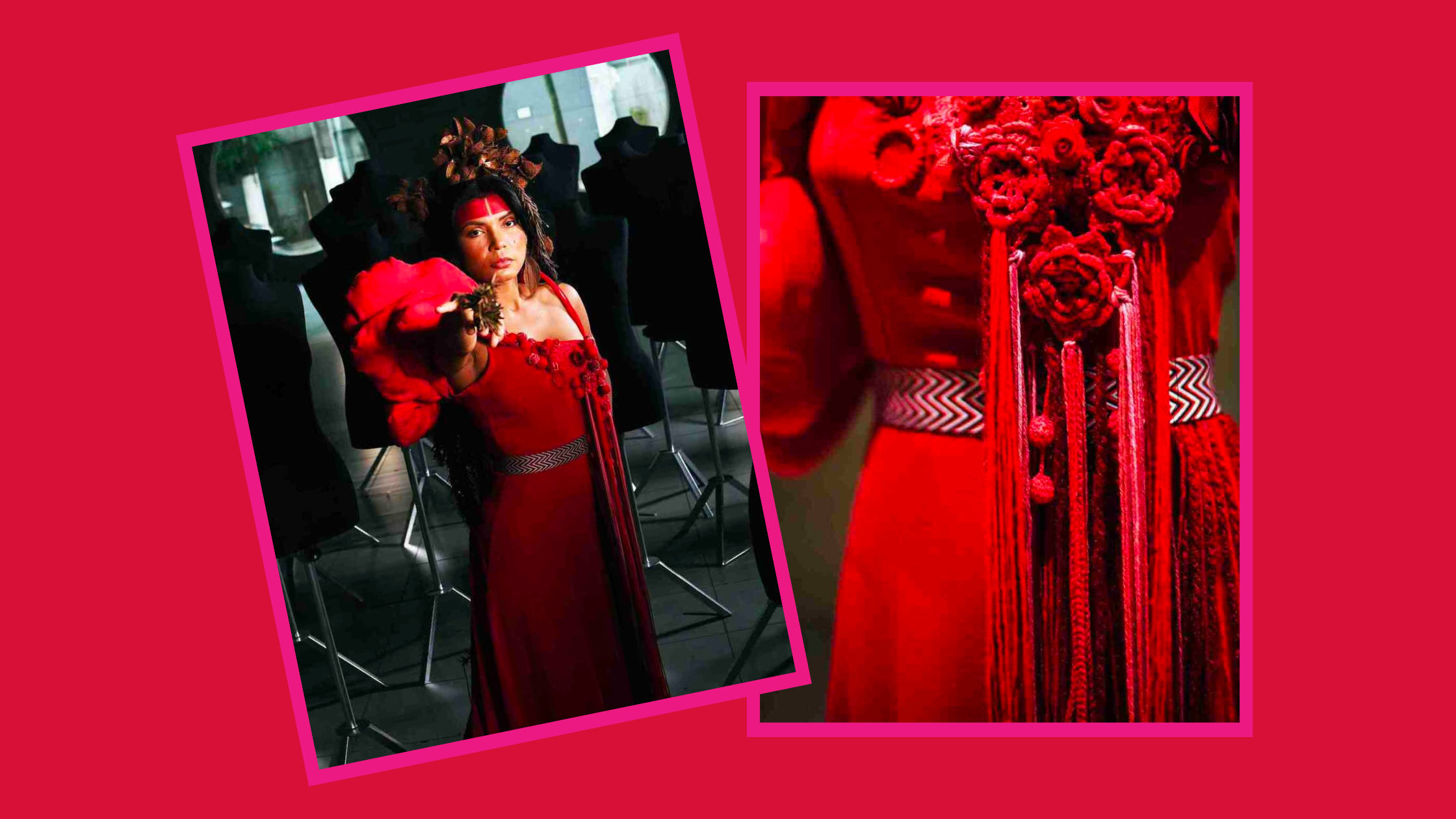Powered by RedCircle
This week I’ve been thinking more than ever about Indigenous fashion. It is practically impossible not to do so, with the celebration of Indigenous Peoples Day on Monday, October 9th, and the commemoration of Indigenous Resistance in Abya Yala (commonly known as “Latin America”) on October 12th.
So I’ve decided to use this as an excuse—as if I needed one—to talk just a little bit more about Indigenous fashion, especially in Latin America.
Technically, today’s holiday—formerly (?) known as “Día de la raza” (something along the lines of Day of the Human Race) throughout Latin America—celebrates the encounter between two worlds with the arrival of Christopher Columbus to the territories that we now call “the Americas.”
The idea of an “encounter” moves past the problematic narrative of a “discovery” of the Americas that erased the agency and even presence of thousands of Native inhabitants of these territories, as well as their forms of social organization, cultures, technologies, and knowledges.
But what if I told you that thinking about an “encounter” is also misleading?
As many historians have argued before me, the word “encounter” suggests a sort of accidental and pacific meeting between two cultures that erases the violence of colonization. [1] Such violence resulted in the extermination of people, objects, languages, cultures, and cosmologies and still shapes many of our social and geopolitical dynamics today. Such violence has also shaped how we think about fashion—especially “Indigenous” fashion—today.
For many, “Indigenous fashion” seems like a sort of oxymoron, as fashion—the highest expression of Western, capitalist, modernity, according to some definitions—has nothing to do with Indigenous existence. But when we see fashion as a verb, as M. Angela Jansen has argued, we can devise the many ways in which fashion can be Indigenous, both in history and today. [2]
In fact, Siksika/Blackfoot art historian and curator Amber-Dawn Bear Robe has argued that “Indigenous design is the original fashion of North America, reflecting a diversity of personalities, world views, beliefs, and epistemologies.” [3] This is also the case for Abya Yala and, in fact, many design narratives throughout the region have taken pride in the wealth of Indigenous textile histories and production since well before the European invasions.
The problem here is that taking pride in Indigenous fashion practices and textile traditions often manifests in rather problematic practices that extract Indigenous textile technologies and ways of knowing from their creators, subjugate Indigenous “artisans,” and position white(ned) designers as saviors and keepers of ancestral cultures. All of these design practices are just as violent as colonization itself.
I don’t intend to point out the designers and brands—of which there are way too many!—that are perpetuating colonial and systemic forms of violence in the ways that they choose to engage with Indigenous culture and heritage in Abya Yala. In fact, I wrote a full chapter on this subject for the book accompanying ¡Moda Hoy! Latin American and Latinx Fashion Design Today at MFIT, which will be published by Bloomsbury next year.
Instead, I want us to think, in celebration of Indigenous Resistance today, that fashion in Abya Yala is and always has been inevitably Indigenous in essence, even if we refuse to believe so! And producing Indigenous fashion in Abya Yala is an act of resistance in and of itself, precisely because it goes against the colonialist narratives that have shaped fashion as we see it today.
The question, now, is how to actively Indigenize fashion in Abya Yala so that it becomes less of an act of resistance and more of a strategy to decolonize fashion in the region and the rest of the world. And here I can’t help but to share some strategies offered by Amber-Dawn Bear Robe (again) and Dr. Jessica Metcalfe (Turtle Mountain Chippewa), which include:
- Expanding Indigenous fashion and arts beyond Native media so that they inundate mainstream discourses about fashion, without limiting Indigenous cultural production to stereotypical views of what Indigenous dress and art should be or look like.
- Recognizing that fashion has never been exclusively European, but rather that European discourses of fashion have erased and degraded Indigenous people from fashion history narratives.
- Changing the ways in which we talk about fashion so that Indigenous fashion, Indigenous fashion designers, and their contributions to fashion as a whole can be acknowledged, recognized, and respected. [4]
This requires, of course, allowing Indigenous people to take the center space and re-tell their own histories of fashion. So expect more on that soon in this space (and in an exciting project that I’m currently working on and plan to launch next month over on Patreon).
What other strategies to Indigenize fashion can you think of? Share them in the comments!
As always, thank you, thank you for reading and until next time!
—L 🩷
References:
[1] One of my favorite essays that touches on the erasure of violence from narratives about colonization is Carolyn Dean and Dana Leibsohn, “Hybridity and Its Discontents: Considering Visual Culture in Colonial Spanish America,” Colonial Latin American Review 12, no. 1 (2003): 5–35.
[2] M. Angela Janssen, “Fashion and the Phantasmagoria of Modernity: An Introduction to Decolonial Fashion Discourse,” Fashion Theory 24, no. 6 (2020): 815–36.
[3] Amber-Dawn Bear Robe, “Indigenizing Fashion: Squeeze Out the Appropriators,” Soundboard 7 (2019).
[4] Jessica R. Metcalfe, “Indigenizing Fashion: Push for Real Inclusion, Not Tokenism,” Soundboard 7 (2019).

Leave a Reply